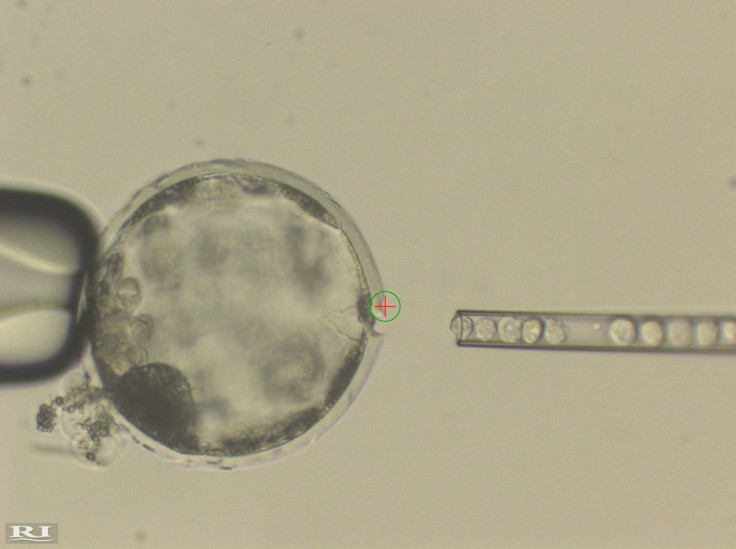The first pig-human embryos have been created – paving the way for organs grown in animals
Chimeras will teach scientists about how human stem cells survive in animals and create organs, but they also raise ethical questions.
Scientists have taken a first step in creating pig-human chimeras, after growing pig embryos containing human cells for the first time. They hope their research will advance their understanding of early human development and disease onset, and lead to the generation of human organs in other species in the future.
There has been a lot of interest in recent years in creating animal/human chimeras – the process of a DNA molecule with sequences derived from two or more different organisms, formed by laboratory manipulation. The ultimate goal of such research is to create functional organs in animals whose size, anatomy and physiology is close to humans. The idea is that they could then be used in transplantation to counter the global shortage of organ donors.
However, this is still a long way off and so far, experiments have mostly been about addressing the technical hurdles of chimera creation and understanding the role of pluripotent stem cells in that process.
In their new research published in Cell, scientists from the Salk Institute (US) report on the creation of pig embryos containing human pluripotent stem cells.
Mice, rats and missing organs
Before turning to pigs and humans, the scientists first worked with mice and rats, which two more closely related species. "We want to use the rat-mouse chimera to understand many basic principles of interspecies chimeras. Rat and mouse are closer species and evolutionarily separated by 15-20 million years ago, but for human and pig, the distance is wider", lead investigator Juan Carlos Izpisua Belmonte told IBTimes UK. "Therefore before moving on to human it was important to gather more information about interspecies chimeras and rat-mouse is a perfect starting point".
In 2010, another team had already shown that it was possible to grow a rat pancreas into a mouse. Just this week, the same team published another study showing that growing a mouse pancreas into a rat was also possible, as well as using it for transplantation.
The scientists from the Salk Institute built on this work for their own research. They successfully created mouse/rat chimeras by introducing several different types of rat pluripotent stem cells into mice embryos. Then, they investigated if the rat stem cells could develop into different functioning organs inside the mouse. To do so, they used a genome editing technique to delete mouse genes that are critical to the development of organs such as the heart, the pancreas or the eyes – thus stopping these organs from growing.
However, the pluripotent stem cells took their place, differentiating to form the missing organs. "For the pancreas, it works well. Rat/mouse chimera with rat pancreas were born and lived to adulthood, with a functioning pancreas. For the heart, we could only generate an embryonic heart, but not an adult heart yet – probably because it is a more complicated organ to generate", Izpisua Belmonte said.
Human stem cells
In the second part of the study, the scientists moved on to introduce humans' cells into pig embryos. Although monkeys are more closely related to humans, US law prohibits the injection of human cells into the embryos of other primates. Here, several different forms of human stem cells were injected and survived, resulting in the creation of a human/pig chimera embryo.

However, the contribution of human pluripotent stem cells to the formation of the developing embryo was very low. "We can detect human cells in early pig embryos, but the contribution is much lower compared to our rat-mouse studies", Izpisua Belmonte explained.
It thus remains unclear whether human pluripotent stem cells would really be able to form functioning human organs inside pigs. "We are now conducting experiments by combining CRISPR-CAS9 zygote genome editing in pigs with the human iPSC, as we did in the rat-mouse chimeras, to see whether human cells can be enriched in a specific organ. At this stage, since the level of human cell contribution is low, we expect it may takes more trials before we can see that happen", he added.
He estimates that it will be at least five to ten years before the generation of human organs in animals becomes a reality. In the meantime, the chimeras can be used to study embryonic development, and hold potential for clinical application such as disease modelling or cell replacement therapies. They also provide a new, live platform for understanding evolution between two species.
The birth of human pigs?
This research opens the door to a number of ethical and legal questions, with opponents fearing that it will lead to the creation of animals that are half human and half pig. However, this scenario is unlikely to happen, and it is worth noting that scientists are taking extra care to address the ethical concerns that their study might create.

"We stopped the pig gestation between 21-28 days, which is very early in development. During this time, the major organs are starting to form, and we can analyse how the human cells are interacting with resident pig cells and which tissues and organs the human cells can contribute. These information will greatly help us in future studies to develop strategies to avoid contribution to certain tissues, such as the brain and the germ cells", Izpisua Belmonte said.
There would indeed be significant concerns if human cells were shown to contribute to the formation of the brain - it would perhaps be one of most important ethical challenges of this kind of research. Here, the scientists have shown this is not the case, as human pluripotent stem cells have so far failed to differentiate into brain cells. However, in future experiments, they will have to remain vigilant, to make sure this does not happen.
© Copyright IBTimes 2025. All rights reserved.






















